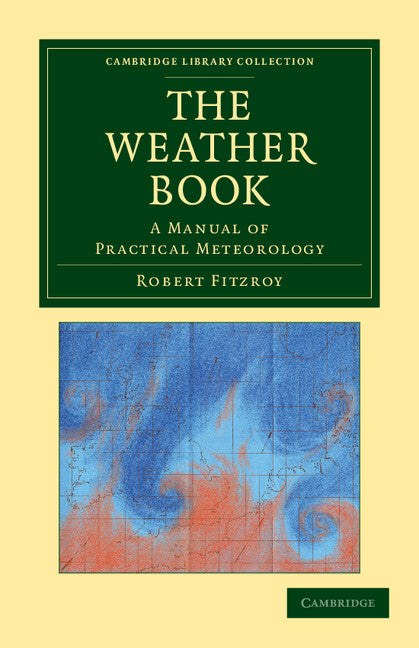Freshly Printed - allow 8 days lead
Couldn't load pickup availability
The Weather Book
A Manual of Practical Meteorology
An 1863 account of the progress of 'weather forecasting' (the term was Fitzroy's own coinage), and proposals for future developments.
Robert Fitzroy (Author)
9781108048309, Cambridge University Press
Paperback / softback, published 26 April 2012
516 pages, 14 b/w illus. 2 colour illus.
21.6 x 14 x 2.9 cm, 0.65 kg
'Robert FitzRoy wrote The Weather Book in 1863. Cambridge University Press has added it to their Cambridge Library Collection, a group of books of historical importance because they were milestones in their particular field … Cambridge University Press have focused on making the text more readable, and the book benefits from being produced using the latest printing technology… overall it is beautifully produced and should last a long time. I wholeheartedly recommend it: there has been almost 150 years of scientific development in our discipline since then, and there are some areas that are different in modern meteorology, but that does not matter. It is a good read and it is enjoyable to recognise the differences between the state of meteorology in the mid-Victorian era and today.' Weather
Robert Fitzroy (1805–65) is best remembered as the commander of HMS Beagle who took on Charles Darwin as the Ship's naturalist, but his most important scientific contribution was probably the establishment of the Meteorological Office in 1854. Convinced that falling barometric pressure was an indicator of storms, he had barometers set up at ports around the coast, so that boats would be aware of impending bad weather, and later had reports telegraphed to his office in London for collation; he invented the term 'forecasting the weather'. This work, published in 1863, gives an account of observations by himself and others, experiments, and proposals for future developments. Almost unbelievably, the Government declared that Fitzroy was exceeding his remit: he was instructed to restrict himself to collecting data, and it is believed that the depression he suffered at this setback was one of the factors which led to his suicide in 1865.
1. Introductory remarks
2. Meteorologic instruments
3. Meteorologic instruments
4. Historic sketch
5. Brief general glance at climates around the world
6. Lower, upper, and intermediate currents of air
7. Recapitulation and further explanations
8. Means employed to collect information
9. Effects of the greater currents of air and their offsets around the world
10. General view of climates in temperate zones
11. Temperate zone
12. Continuation of temperate zone
13. Utilisation of meteorology: its statistics and dynamics
14. Method of proceeding with telegrams
15. Supposed cases for forecasting and warnings of weather
16. Our atmosphere: its usual conditions
17. Diagrams illustrative of Polar and typical air-currents
18. Tidal effects of moon and sun
19. Extracts from various accounts quoted by Sir William Reid illustrating forces of hurricanes
20. Hurricanes in Pacific
21. A few extreme cases witnessed by the author
Appendix
Index.
Subject Areas: Meteorology & climatology [RBP]


